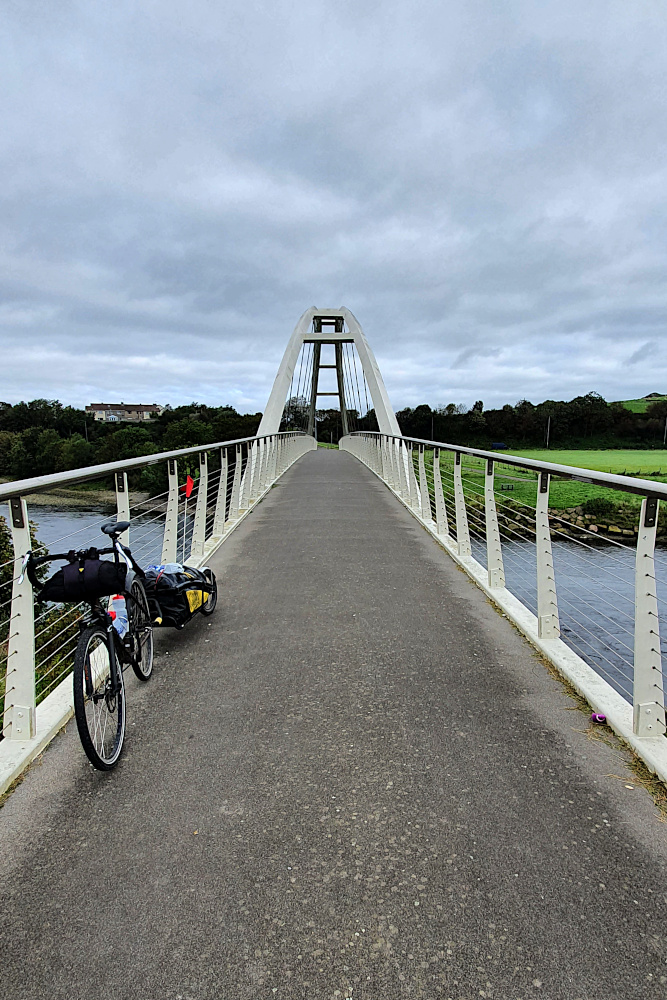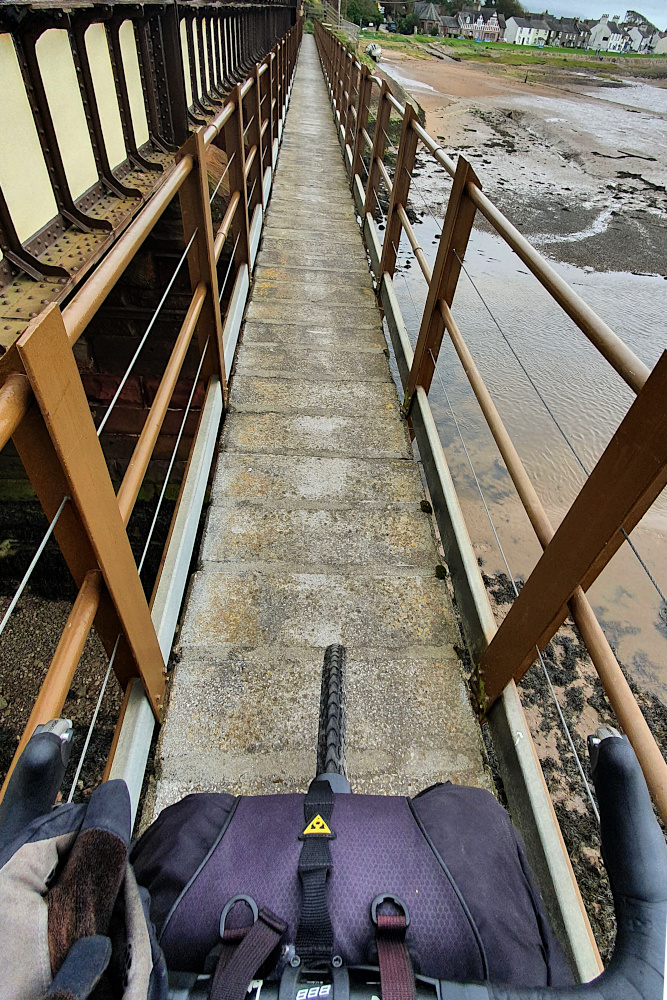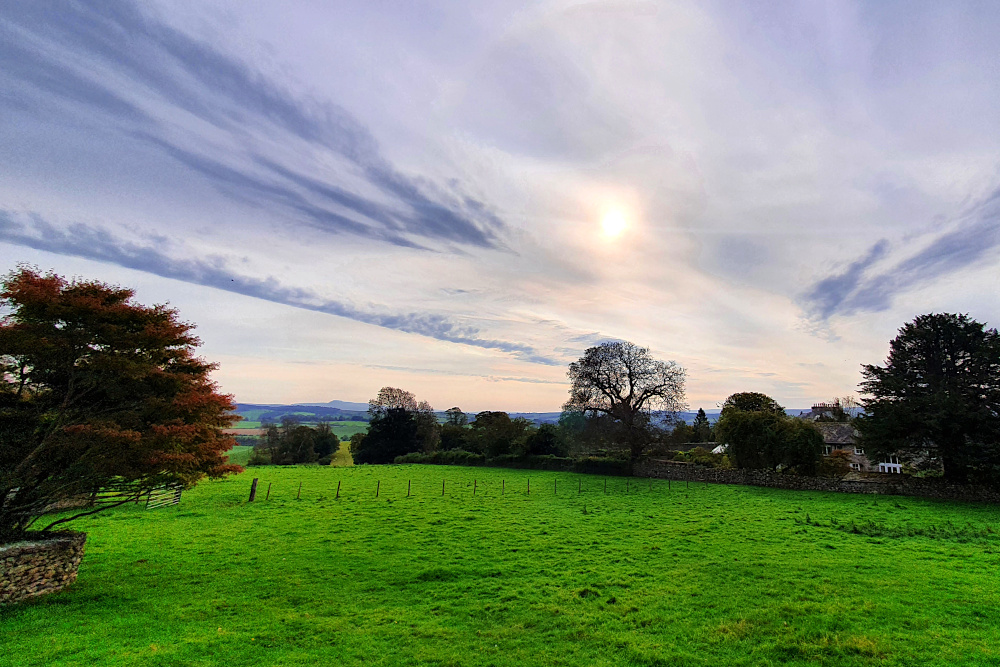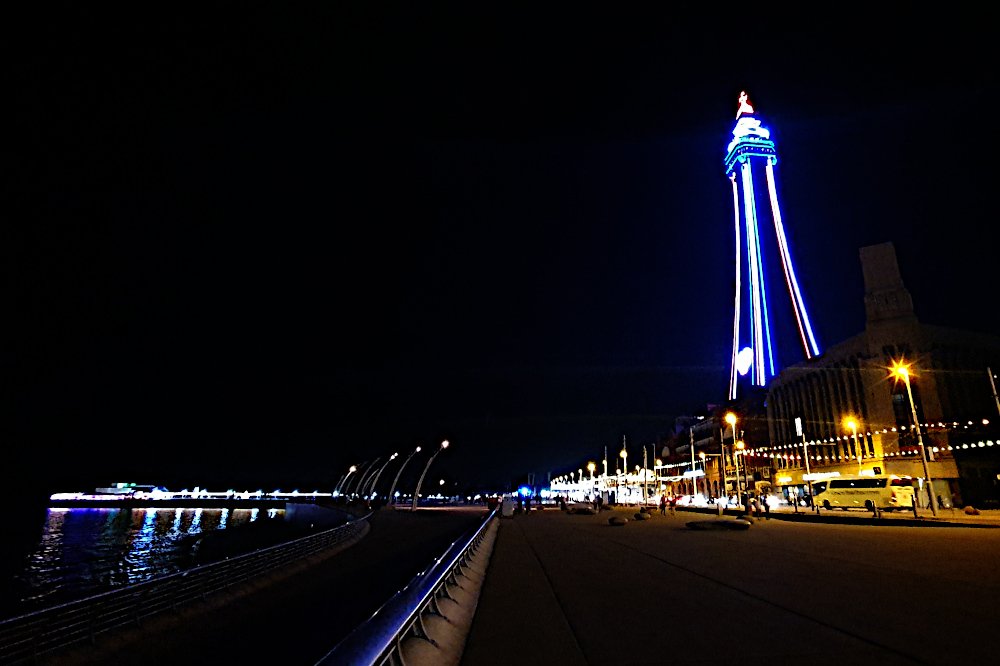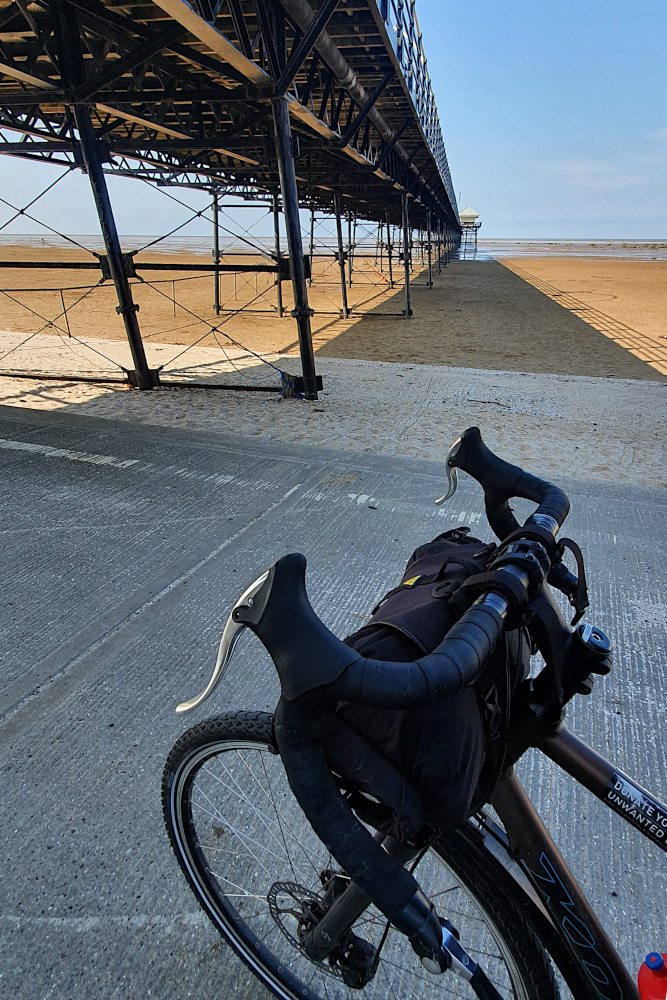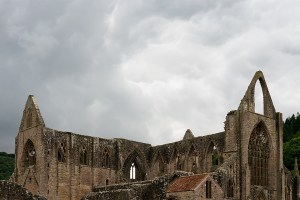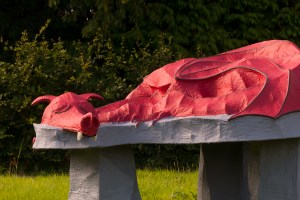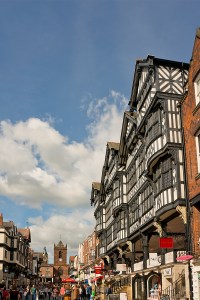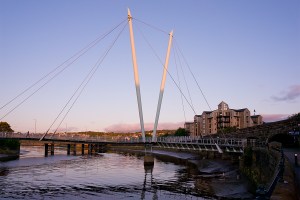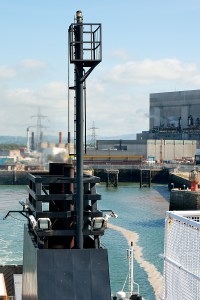After the stunning success of pretty much every pun I’ve come up with, I’ve spent a chunk of the last few days on the bike trying to come up with a way of getting ‘it’s the angle, see’ into a sensible sentence. Having found no realistic way of doing so, I’ve decided (wisely, I think) to just leave it.

I escaped from Liverpool on the ferry ‘cross the Mersey 24 hours before they announced new Covid restrictions, along with most of the north of England. The only barrier to my departure was a significant number of sand drifts covering the sea-wall bike paths along the edge of the Wirral peninsular.

Just a couple of hours after leaving Liverpool, and fresh from a decent rail path down the west side of the peninsular, I was heading across the valley of the river Dee when I crossed into Wales (the fourth and last of the UK’s constituent bits for this trip).
I’m not sure if the nice boardwalk over the Deeside marshes (above) was in England or Wales, but being confronted by a wooden miner a few miles later (below) confirmed that I had, indeed reached the Welsh side of the border.

The north coast of Wales is a series of holiday resorts, for the most part with broad concrete sea walls to ride along. This should be both nice and quick. And the lack of traffic is nice. But the propensity of wandering pensioners to lose all sense of spatial awareness when grappling with chips or ice cream made things slow. Very slow in places. In a normal (non-Covid) summer, it must be nearly impossible to make any progress at all along the north coast.
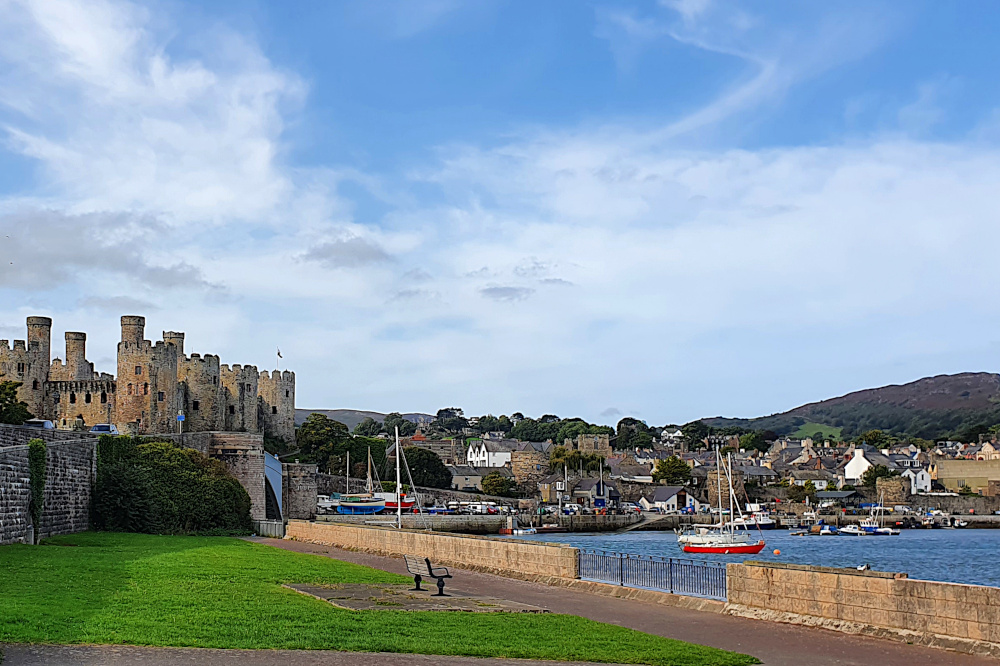
Things change after Llandudno. The coastline tilts southwards, faces the island of Anglesey across the Menai Straits, and takes on more of the character of the mountains of Snowdonia, which are never far away.
And castles begin to appear, like at Conwy (above), ringing the areas of Wales which the English found hardest to control back in medieval times. Pretty soon, it’s hard to move without stubbing your toe on another castle.
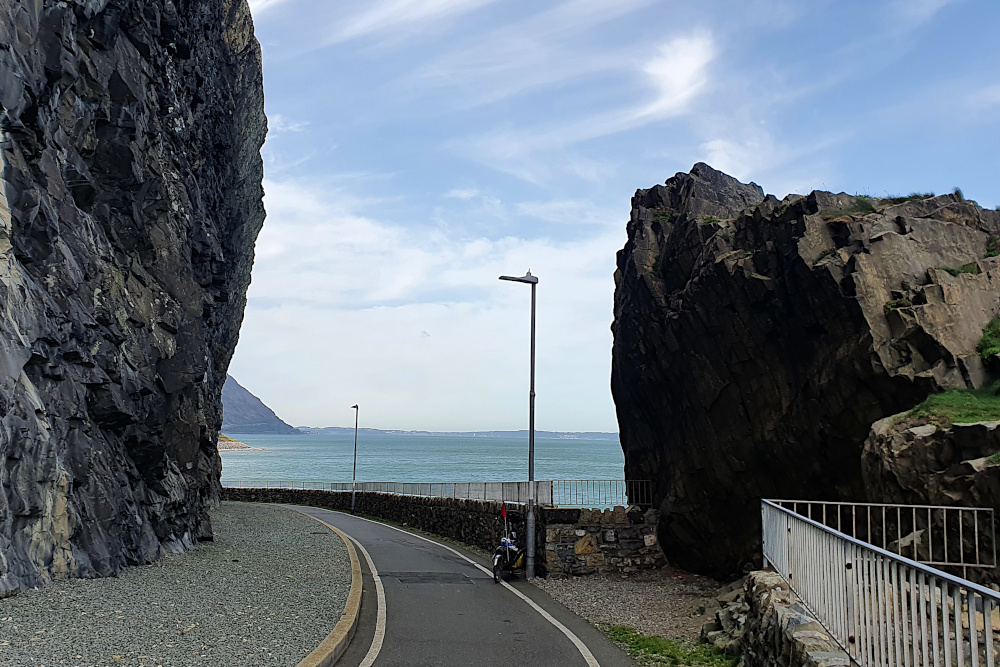
The pensioners disappear as the coastline becomes more rugged, and the route (still mostly traffic-free) becomes more spectacular. The only downside of this is that progress is a little tougher than it would be on the flat.
I spent most of the last two days lapping Anglesey (the second, after Northern Ireland, of my two laps-within-a-lap). Crossing the Menai Bridge (below) gives you a good view of the ferocious tidal current running between the island and the mainland.
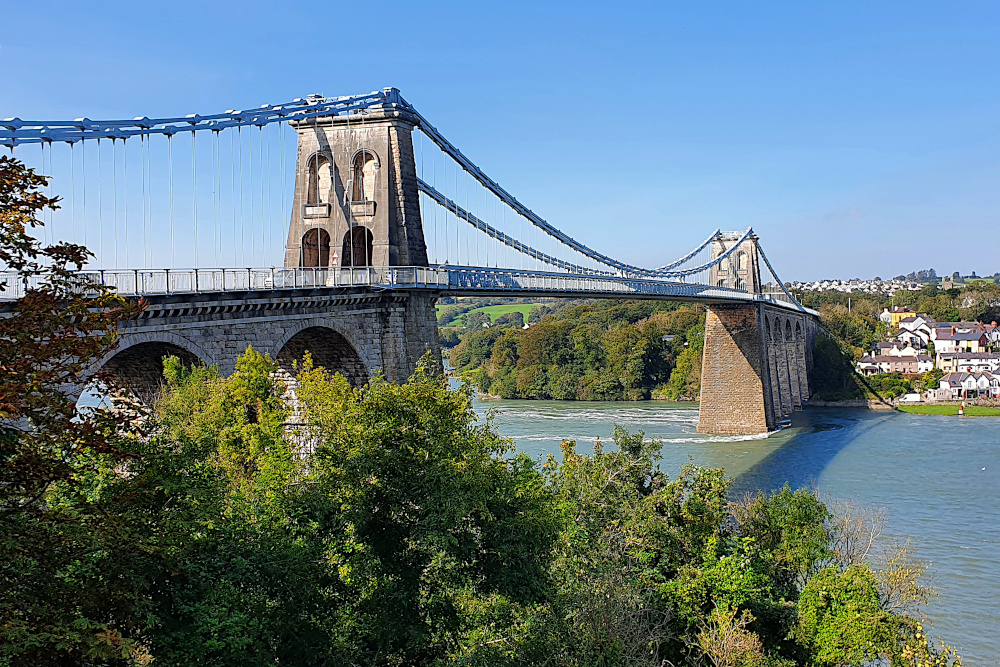
And on Anglesey, the landscape changes again. The south of the island, especially, feels a bit like being back in Devon and Cornwall, with short, but very steep climbs on tiny country lanes. It’s very pleasant, but if you don’t already know the Welsh word for ‘Slow’, you will after pottering around the island.
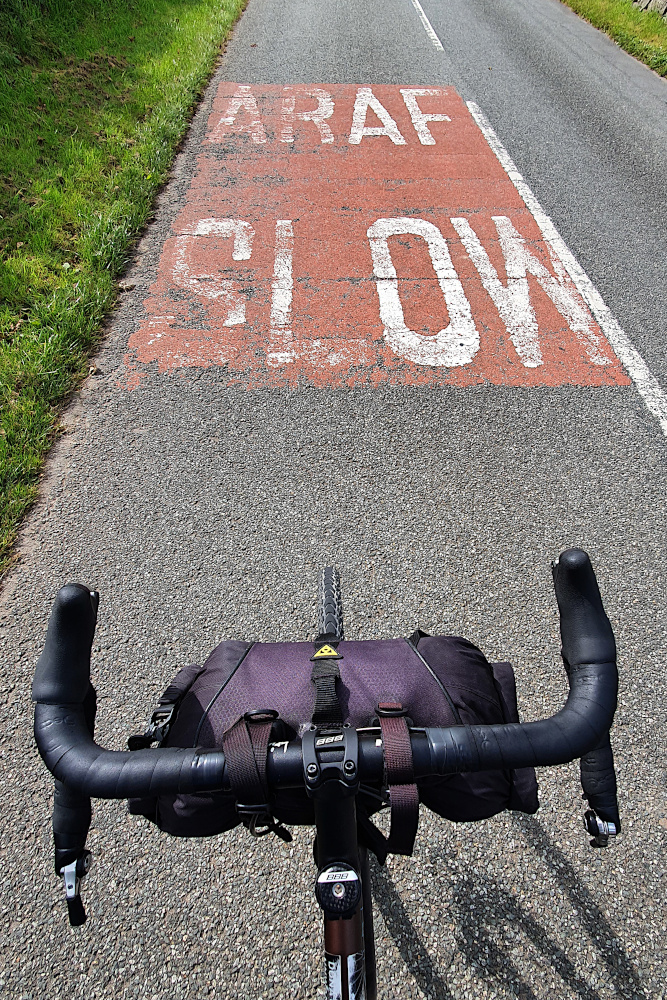
If you’re in a hurry, the jet fighter trainers buzzing out of RAF Valley will exacerbate any frustration at the lack of speed. I wasn’t hurrying, so it was fun to watch them zipping around in formation for a while, before trundling down to the beach at Trearddur Bay (technically on Holy Island, a sub-island of Anglesey).

Yesterday (Saturday), it was the return to the Menai Straits and the small city of Bangor. There’s been an unusual, really strong north-easterly wind for the last few days, which blew me nicely along the north coast, but was pretty fully in my face as I struggled back towards the bridge. It’s all, erm, about the angles, see?
Ha! Think I got away with that pun, after all…
A quick stop at Beaumaris en route revealed part of another castle, but also a spectacular view back across the straits, almost all the way back to Llandudno. There’s more of that sort of landscape to come as I head south in the next few days.

That’s all assuming that the Covid situation doesn’t finally mess things up. I’ve been very lucky so far, but the last few days have seen restrictions ratchet up all over the country, and serious-sounding talk of further measures to come. Especially worrying for me is that there’s some discussion about areas of South Wales, which are on my route, and would potentially block it.
Having got so close to finishing the trip, it would be pretty gutting to be halted by Covid restrictions just a few days short of home. But it’s out of my control, so I’ll just have to keep plugging away until I can’t. Hopefully, I’ll at least get to somewhere with a direct train connection before things fall over…
